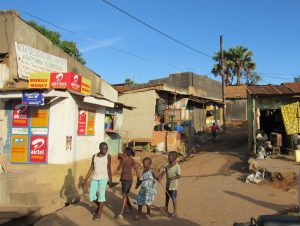 During our three short weeks in Uganda, we have been fortunate to have time to visit various NGO’s serving individuals facing addiction and learn about their recovery programs. One particular visit was especially welcoming and heart warming in a unique way.
During our three short weeks in Uganda, we have been fortunate to have time to visit various NGO’s serving individuals facing addiction and learn about their recovery programs. One particular visit was especially welcoming and heart warming in a unique way.
Immediately upon arrival, before we even exited the bus, the women and children expressed their excitement through song, dance, and smiles.
As many places we have visited, the warm welcome comes in the form of dancing as a performance for their visitors. However, this performance was different than all of the others because we were asked to participate! Traditionally, the dancers wear sashes, ropes of fabric, or fur cloths tied around their hips to accentuate their hip movements. Once they had done their introductory dance, they made their way to where we were sitting, intrigued by their movements. Before we knew it, they had untied their sashes and looped them around our waists, pulling us up to join them in celebratory dancing. It was so special to be included in their dance, even though most of us had trouble keeping up. It felt like a very genuine gesture and one that is unique to Africa.
It was wonderful to see the women and children so appreciative of the small generosity expressed through our bag of donations of clothing. They eagerly pulled them out of the bag and started putting them on one another. Then, they would hand use a clothing item and have us place it over the head of a woman so that she could wear it. It was a very humbling experienc e to be a part of clothing these women with our donations from friends and family in the US. While the women were dressed up in their very best outfits, some of the children appeared as though they had not received new clothes in months. Although it was not a big imposition for us to bring our gently used clothing, they made us feel like it was worth a lot to them which made it very much worthwhile.
e to be a part of clothing these women with our donations from friends and family in the US. While the women were dressed up in their very best outfits, some of the children appeared as though they had not received new clothes in months. Although it was not a big imposition for us to bring our gently used clothing, they made us feel like it was worth a lot to them which made it very much worthwhile.



